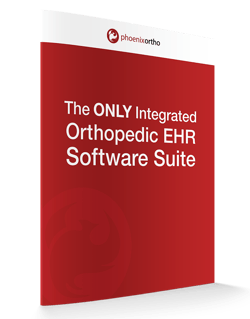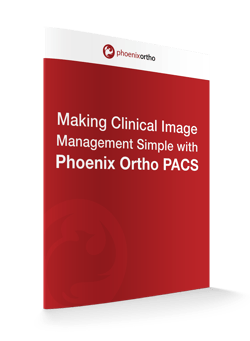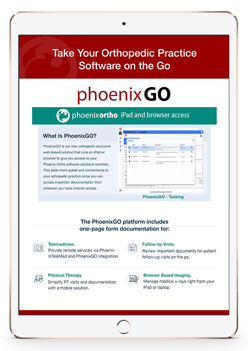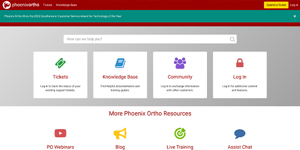As technology changes, so do the ways that orthopedic practices operate. In recent years, orthopedic physicians and clinic staff have seen many new technological innovations that change the way they handle patient intake, data access, and claims submissions.
One of these new trends is the rise of virtual patient visits—which are enabled by using technology solutions to help physicians remotely diagnose and communicate with patients.
How did virtual patient observation come to be? Why are orthopedists making the switch to virtual visits?
The Rise of Virtual Patient Programs
Virtual patient visits are a product of the ever-evolving technology that drives modern healthcare practices. The introduction of technology (like telemedicine apps for smartphones) that allowed patients to send doctors self-reports of their symptoms and even pictures of medical issues instantaneously was a huge advancement for convenient care.
Now, instead of having to wait in a doctor’s office, patients could get a diagnosis via a virtual patient visit and analysis as soon as a doctor was available to make one. This is a major time-saver—especially in practices as busy as an orthopedic clinic, where a doctor might see dozens of patients before lunch.
So, it’s little wonder that clinics would want to adopt the virtual visit!
How COVID-19 Is Making Virtual Patient Visits the New Normal
New technology isn’t the only thing driving change in orthopedic practices. Since the start of the COVID-19 pandemic, many clinics (and not just orthopedic ones) have had to make major alterations to the way they operate to better protect the health and safety of both their patients and staff.
As noted in an article by Forbes from September 2020:
“As we experience a resurgence Covid-19 cases, healthcare consumers are continuing to adjust their expectations for what healthcare will look like in the future… providers are adopting telemedicine technology to meet the growing demand for risk-free, convenient and cost-effective access to care. Welcome to our new normal — the age of the digital doctor’s office.”
Concerns about exposure to the coronavirus during the pandemic were driving patients to avoid areas where they could face crowds—such as a busy doctor’s office. A survey cited in the Forbes article also noted that “91% of respondents who have had a telehealth appointment said they are more likely to schedule a telehealth appointment instead of an in-person visit in the future.”
In other words, virtual patient visits are here to stay.
3 Ways Orthopedic-Exclusive Software Improves the Virtual Patient Experience
Of course, no telehealth solution exists in a vacuum. The solution that the clinic uses to run a virtual patient simulation online should integrate smoothly with its Electronic Health Records (EHR) solution.
For orthopedic practices, using an orthopedic-exclusive EHR with a telemedicine and virtual visit solution can be incredibly useful. Some of the benefits include:
1. Improving Patient Data Access for Superior Care Quality
Patient data access is a critical part of any medical workflow. Without fast and reliable access to important data about patients, it can be difficult to create a treatment plan/regimen that takes into account all of a patient’s needs.
In a worst-case scenario, not having data such as patient allergies or their current medications could result in an adverse reaction if an orthopedic physician recommends the wrong medication for relaxing muscles or managing pain.
By removing patient data access hurdles, orthopedic surgeons can improve patient safety and quality of care.
2. Saving More Time on Patient Information Management
The process of tracking patient information for each visit can be extremely time-consuming. This is especially true if the patient data management solution being used:
- Doesn’t Integrate with Your Virtual Visit Solution. This forces physicians to manually copy information into the patient file in the EHR software—wasting time and increasing the risk of data errors.
- Has Menus and Features You Don’t Need. A multi-specialty EHR meant for primary care may have a lot of menus and features that, frankly, orthopedists don’t need. Sifting through these extra menus both wastes time and makes the software more frustrating to use.
Using an orthopedic-exclusive EHR that is integrated with your virtual visit solution can help to save a lot of time for physicians. Instead of having to manually move data, information can be added to the patient file quickly and easily.
3. Improving Collections at the Point of Care
Payment collection is a critical issue for any healthcare practice. However, because of the high volume of patients that orthopedic doctors see each day, processing claims with various payers (insurers, employers, and the patients themselves) can be a major task that takes a lot of time.
An EHR can help improve the payment collection process at the point of care by helping with Evaluation and Management (E & M) codes to help select the optimal codes to ensure maximum recovery of funds while minimizing the risk of errors that result in claim denials.
What Do Virtual Patient Observations Mean for Orthopedics?
So, what will the impact of virtual patient observation and diagnosis be for orthopedic practices? Some likely potential impacts include:
- An Increase in Younger Patients Visiting Virtually. According to a study of 5,441 patients and 144 physicians, “Younger patients and physicians were more likely to use and provide virtual visits.” Younger people, who have grown up with modern telecommunication technologies (such as smartphones) are more likely to be more comfortable with using telehealth solutions. This may also increase the total number of younger Americans who “visit” orthopedic doctors, as virtual visits remove some of the barriers to visiting a healthcare provider.
- Orthopedic Physicians Spending Less Time in the Office. A virtual visit doesn’t have to be conducted in a traditional office setting. Orthopedic physicians can review patient observations about their condition, patient photos, and more from their virtual visit app. This could allow some physicians to conduct reviews for virtual visits on the go—meaning they won’t be as tied down to the office.
- Less Crowded Clinics. With virtual visits, patients won’t always need to come to the office or basic care and diagnosis. This allows physicians to move their least-critical patients out of the clinic, freeing up room for making patients with more serious conditions that require in-person treatment more comfortable.
- Reduced FTEs for Front Office Staff. With fewer patients in the clinic, some orthopedic practices may be able to reduce their full-time equivalents (FTEs) for front office staff. This can help clinics reduce their labor costs while still providing excellent quality care.
It wouldn’t be surprising to see more and more physicians starting to adopt telemedicine solutions like Phoenix InTeleMed to perform remote diagnoses of patients and skip the patient wait entirely.
Are you curious about how your orthopedic practice could increase profitability, save time, and help more patients per day? Reach out to the Phoenix Ortho team to get started!
Schedule a 1:1
Get in touch with Phoenix Ortho to learn more about how you can save time, money, and mouse clicks with an orthopedic-specific EHR.






















